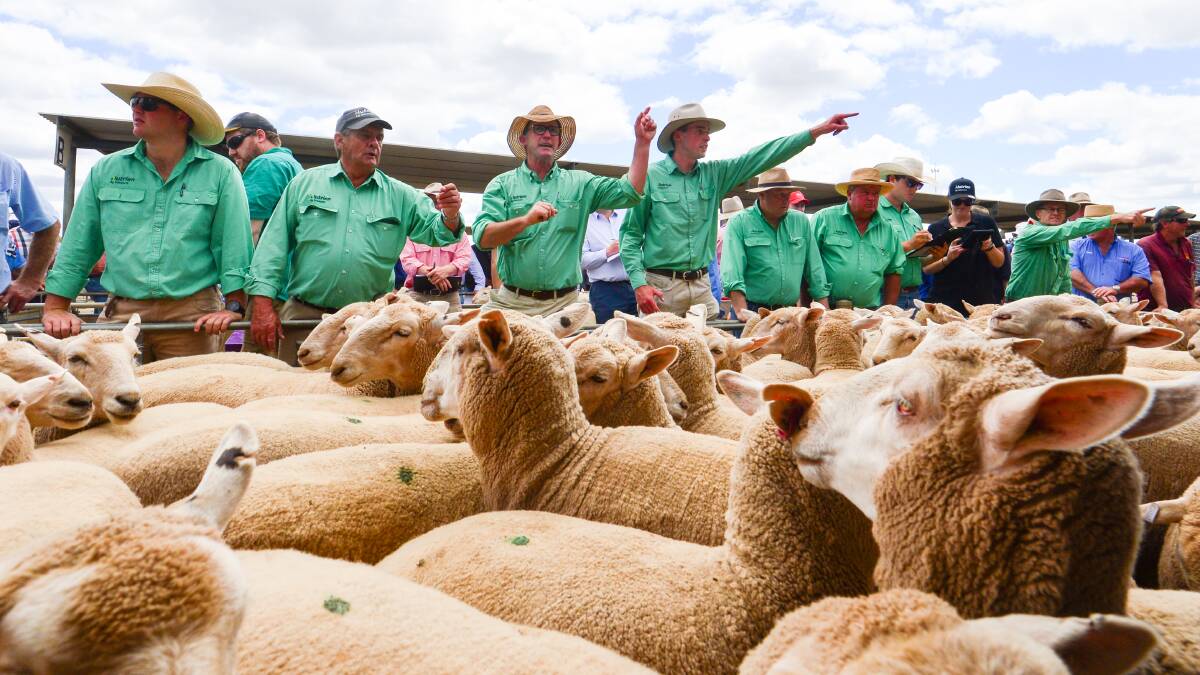
A year of historically strong lamb prices saw records set for the restocker lamb and trade lamb indicators.
Subscribe now for unlimited access to all our agricultural news
across the nation
or signup to continue reading
Restocker lamb hit 1026c this year, 1c higher than the previous high reached in March 2020.
Trade lamb got to 951c this year, marking the first time it has ever broken the 950c barrier.
Heavy lamb reached 984c well below the 997c high of March 2020 but still historically high.
Light lambs reached 906c for the year, still below the March 2020 record of 932c.
Merino lambs reached a high of 863c, below March 2020 prices in the 880s range.
Mutton broke the 700c mark in July when it reached 701c, which was still below the all-time high of 728c reached in 2020.
Meat & Livestock Australia markets information officer Stephen Bignell said even though Australia was in the second year of a rebuild phase, lamb slaughter had come in three per cent above last year.
"Slaughter has been up because we've had a bigger lamb cohort but we've seen real retention of ewes," he said.
"We did see lamb prices increase but supply also increased... producers can make more and there is more being processed, while with sheep we saw the tight supply was pushing up prices.
"South Australia is probably the one state that hasn't had such good seasonal conditions and we are seeing that in producer intentions and throughput."
Mr Bignell said the percentage of breeding ewes that are Merinos fell below 75 per cent for the first time this year, showing a shift towards meat sheep.
Mutton is finishing the year fairly well after jumping about 80c in a three-week period on the back of its plummet to 549c in early November.
Looking forward to 2022
It's predicted that the strong market trends will continue into 2022 and even 2023.
Forecast modelling of the Eastern States Trade Lamb Indicator from Thomas Elder Markets is expecting annual averages across the coming seasons to remain strong on the back of good sheepmeat export prospects, a recovering global economy and an Australian dollar that is trending lower.
The Thomas Elder Markets ESTLI fair value model is currently predicting an annual average of 846c/kg for 2022 and 877c/kg for the 2023 season.
For 2020, the modelling forecast an annual average or 820c, with the actual average proving even better at 863c as of early December.
Thomas Elder Markets commodity insights manager Matt Dalgliesh said broadly speaking while the cattle markets were likely to see a downturn into 2023 and 2024, the fundamentals behind sheep meat markets demonstrated that the prospects for lamb were strong in coming years.
"The model indicates that we're not really anticipating any real price decline going out until 2024 on an annual average basis," he said.
"Obviously you'll still see the normal seasonal ebbs and flows that you get within the lamb market.
"As we've seen over the last few years, we'll get those peaks and troughs... every season we get a higher and higher trough and a higher and higher peak and that's going to be the same for the next two to three years at least, if not for the next five years."
MORE READING:
Mr Dalgliesh said the global sheep meat market was in what he would he would describe as an expansionary phase.
"Those export markets that are key to us are still expanding, in my view, and there's still more opportunities to continue to see those grow in terms of both volumes within existing markets but also new markets," he said.
Those export markets that are key to us are still expanding, in my view, and there's still more opportunities to continue to see those grow in terms of both volumes within existing markets but also new markets.
"If you look at the volumes that have gone to the USA this year in terms of mutton and lamb they've been incredibly strong and that's a dynamic of a changing kind of consumer base over there.
"Sheep meat is still a fairly niche market [for US consumers] but it's becoming more popular."
Mr Dalgliesh said the Australian sheep meat market had limited competition globally, with the sector in New Zealand shrinking, while demand is robust.
"That's what's been fuelling these successive higher and higher peaks and troughs over the last two decades and that's not set to go away in a hurry," he said.
"It's not a market that's plateauing.
"There's a real incentive at the producer level to rebuild the flock as quickly as possible."
Mr Dalgliesh said looking at the combined lamb and mutton markets close to 75 per cent of the product was now being exported as compared to about 45 per cent a decade or two ago.
With the later spring flush it's likely that above average throughput can be expected going into January and February.
"It could mean that we might see a few more price declines into the New Year," Mr Dalgliesh said.


